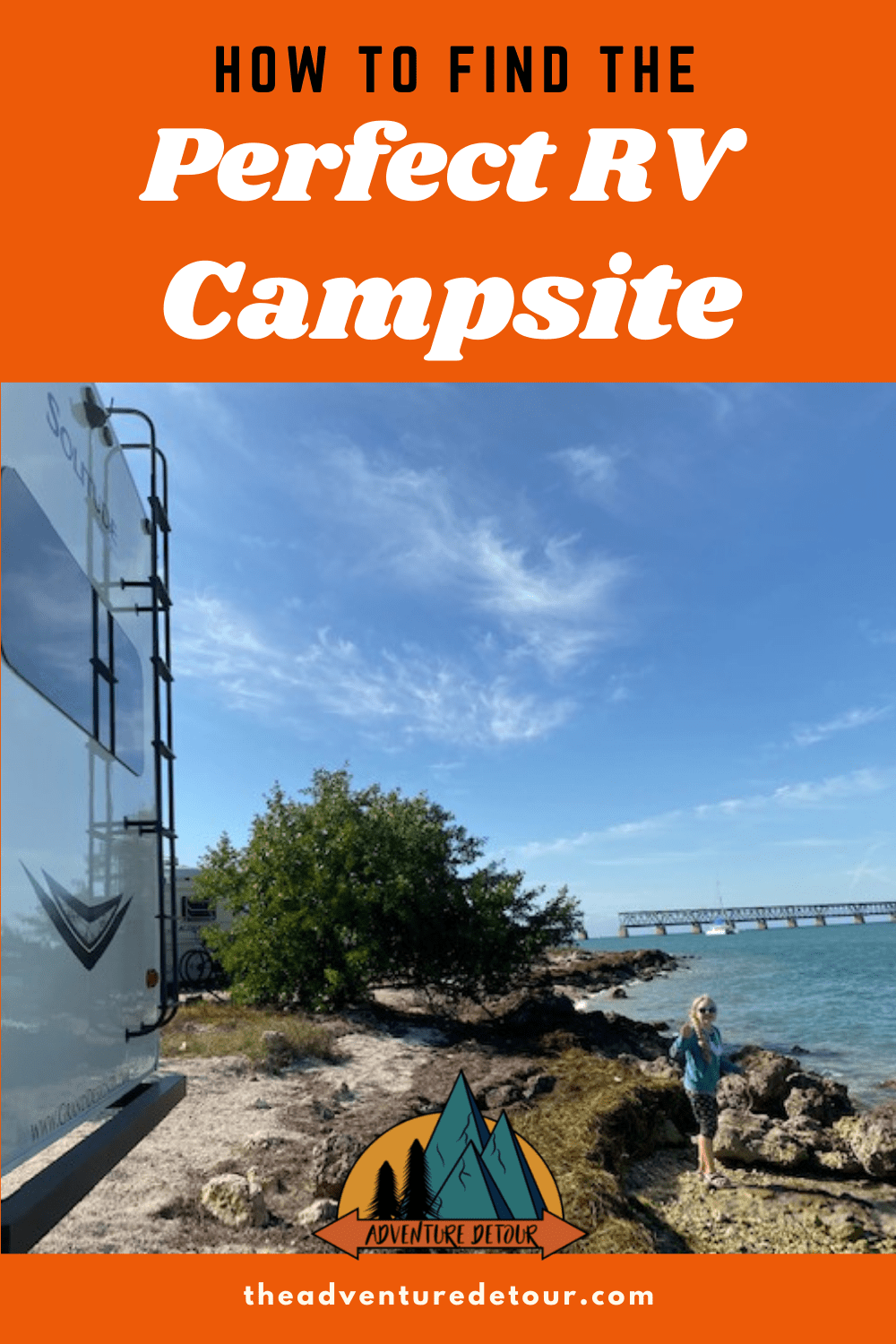
Are you overwhelmed by the number of camping options out there? As full-time RVers, we spend HUGE amounts of time looking for the best camping locations. I will share my tricks with you in this RV Travel Guide.
In the first post of this series, we found your RV camping style. If you missed it, check it out here: Discover Your Unique RV Camping Style: RV Travel Guide Series Part 1.
Finding The Perfect RV Campsite
After you figure out your camping style, the next step is to find your perfect spot. We will start with finding camping locations and then go into how to decide if the location will meet your camping needs.
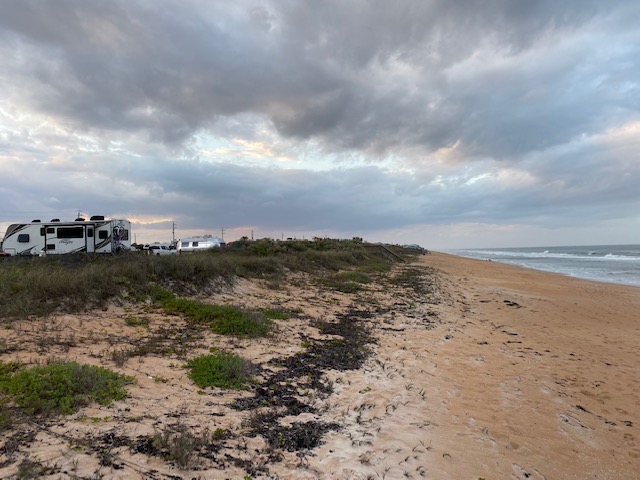
1) There Is An App For That
Of course, there is! Actually, there are many apps to look for RV camping locations.
Most of them aren’t great though. My favorite app is AllStays. I have the paid version that was a cheap one-time purchase of $9.99 and I have used it for many years now.
I love how AllStays can work offline. It also shows truck stops, rest stops, steep road grades, and low clearance locations.
It is easy to filter a search for my camping style. For example, I can filter for private campgrounds, state parks, Corps of Engineers, etc. to quickly find exactly what I am looking for.
The best FREE app I have found to locate camping is Campendium. It is really easy to use and free is always good.
Two other popular paid apps are The Dyrt (yearly fee) and RV Life (monthly fee). I haven’t yet used these, but they may be great options for you to check out.
Boondocking is sort of its own animal when it comes to finding camping locations. The general camping apps all include some locations however, you may want to look into apps specific to boondocking like FreeRoam, Free Campsites, or Boondocking for more options.
2) Google Maps
I like to use Google Maps to look in the area surrounding my desired destination for camping locations. I search by typing in camping, RV camping, RV parks, and state parks over the area I want to be in.
Google Maps is a really great tool because I can find some locations that aren’t listed anywhere else. I can also zoom in and see what the aerial view looks like of the place and the roads leading up to it.
I can also check out a few reviews while I am in there. Google Maps is always a part of our campground search.
3) Camping Membership Websites/Apps
Do you use camping memberships or discount cards to save money on camping? If not, you may want to look into some of these discounts.
There will be a future post on camping discount cards soon as part of the RV Travel Guide Series! But until then, I at least recommend checking into Passport America.
If you use camping memberships or discount programs, they each have a website or app where you can see locations of participating campgrounds.
You can look to see if there are locations near your destination, or you can even plan your travels around locations within your membership. There is always something to explore near any destination.
Some of the apps include membership campgrounds when searching, but locations are often added or discontinued, so the most reliable source is always the membership site.

4) Good Ole Books
Sometimes going old school and grabbing a couple of camping books can offer you some additional unique camping options that you may not find elsewhere.
This is especially true when looking at boondocking or Corps of Engineers (COE) Campgrounds which can both be harder to find information for online.
COE campgrounds are notoriously hard to search for. The Corps of Engineers camping website is pretty sad. It only shows a few of their locations and offers hardly any information about the ones they do show.
If you check your camping apps but still think you may be missing COE locations, grab a book such as Camping With The Corps Of Engineers (last published in 2018) or RV Camping In Corps Of Engineers Parks.
Boondocking locations can be a challenge to find. It seems like many campers can tell you the secret places they have discovered, but those aren’t easy to find online.
Consider looking into boondocking books such as the Bureau of Land Management Camping Book. More apps seem to be created all the time for boondocking and hopefully, it will be easier to find these lesser-known locations in the future.
A popular older book to find interesting cheap camping locations is the Wright Guide to Free and Low-Cost Campgrounds (last published in 2014).
The problem with books is that the information is often out-of-date. We have used books to find unique locations and then search online to get the most up-to-date information.
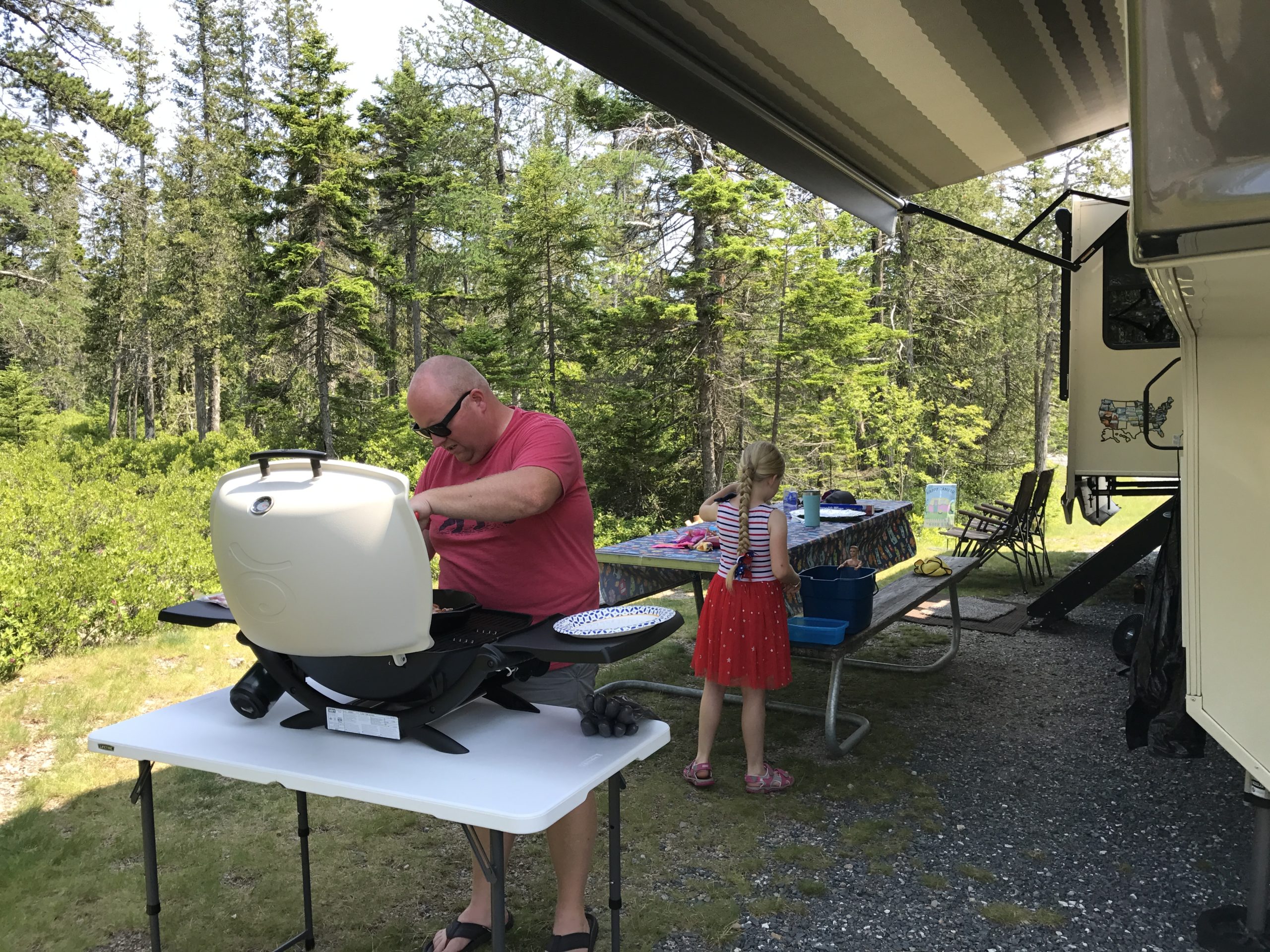
How To Choose The Perfect RV Camping Location
Now that you have found some awesome camping options using apps, Google Maps, campground membership websites, or books, how do you pick the best campsite for you?
1) Check Reviews
Sometimes the information you can snag about a location from reviews can be invaluable. Reviews that say someone got stuck in the mud, property broken into, or had electrical issues, are great examples of places we would likely avoid.
My favorite place to look at reviews is Campground Reviews. This free site contains reviews for many styles of RV camping, not just campgrounds.
My favorite feature on Campground Reviews is the ability to search reviews by camping unit type.
For example, I can look at reviews by RVers in a fifth wheel versus a tent or travel trailer. Since we have a large fifth wheel, reviews from other fifth wheel campers can help me know if we would have any issues with fitting into campsites or navigating campground roads.
A bonus is that some reviewers also list fun things to do in the area.
Information To Look For In Reviews
– internet/phone service limitations
– utility issues: especially power hookups
– narrow roads, rough roads, or tight turns
– low trees
– hidden fees for extra people, an extra car, pets, 50 AMP, electric, or other fees
– campsite size
– bathrooms and facilities
– security issues
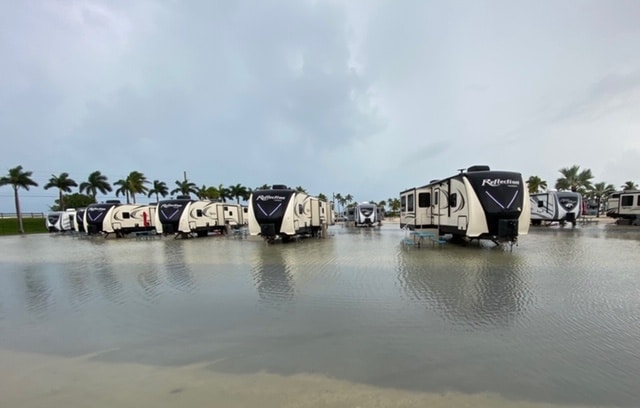
2) See What The Place Looks Like
I like to use Google Maps to look at all the views of the camping area I can find. Sometimes I can only see the aerial view, but other times I can use street view to follow the blue line on the map like I am driving the actual roads.
Many campsites are also available to be viewed at Campsite Photos. This website is adding locations all the time and offers a view of specific camping sites in private campgrounds, state parks, and national parks.
When I search for photos of what the campsite/campground looks like, I am trying to get a feel for the place, see if there are low trees, tight turns, and the size of campsites.
3) Call The Campground
Even if you can make the camping reservation online, it is helpful to call the campground directly.
It is important to find out if there are any extra fees. Also, find out the cancellation policy.
Some locations are paid in full at the time of the reservation, others require a deposit, and some don’t require any payment in advance.
Cancellation policies vary widely and you can lose quite a bit of money on some reservations if you need to cancel. It helps to make a note on your calendar so that if you need to cancel, you do it early enough to get your deposit back.
I like to try to get a confirmation number or email for the reservation and make sure that the size of my camping unit is noted so that they assign us a site we can fit in.
Then a couple of days before the trip, I call the campground to make sure I know the best route to get there from the highway. Usually, any clearance issues with trees or bridges are on backroads on the way to the campground.
I also double-check that we will fit in the site they have assigned us to. This call has saved us so many times!
A few times we have been told that they didn’t even have our reservation. Some really rural places are super small, cash only, and write reservations down on paper.
Even more times we have been assigned a site that we didn’t fit in and had to be switched. All of these situations are frustrating, but it is much better to sort it all out before we arrive.
Summary Of Things To Ask The Campground
– cancellation policy and deposit
– the best route to the campground from the highway to avoid low clearance issues
– verify site size fits your camping unit
I hope you have found this information helpful to find the perfect RV campsite. The goal here is to do a little work upfront so that you can be a happy camper on your trip.
I would love to hear how you like to search for campsites in your travels. Hit, REPLY and let me know!
Don’t miss the next post in our RV Travel Series. How To Save Big On RV Camping: RV Travel Series Part 3
Did you miss the first post in this series? Discover Your Unique Camping Style: RV Travel Guide Series Part 1
Have you ever wondered if full-time RVing feels like living on vacation? Check out this post: Why Full-Time RVing Is Not Like Living On Vacation
Grab my FREE guide: How To Score Sold-Out Campsites In State And National Parks
Don’t forget to sign up for my newsletter. If you enjoyed this post, be sure to share it and Pin it.
Enjoy your adventure detour!
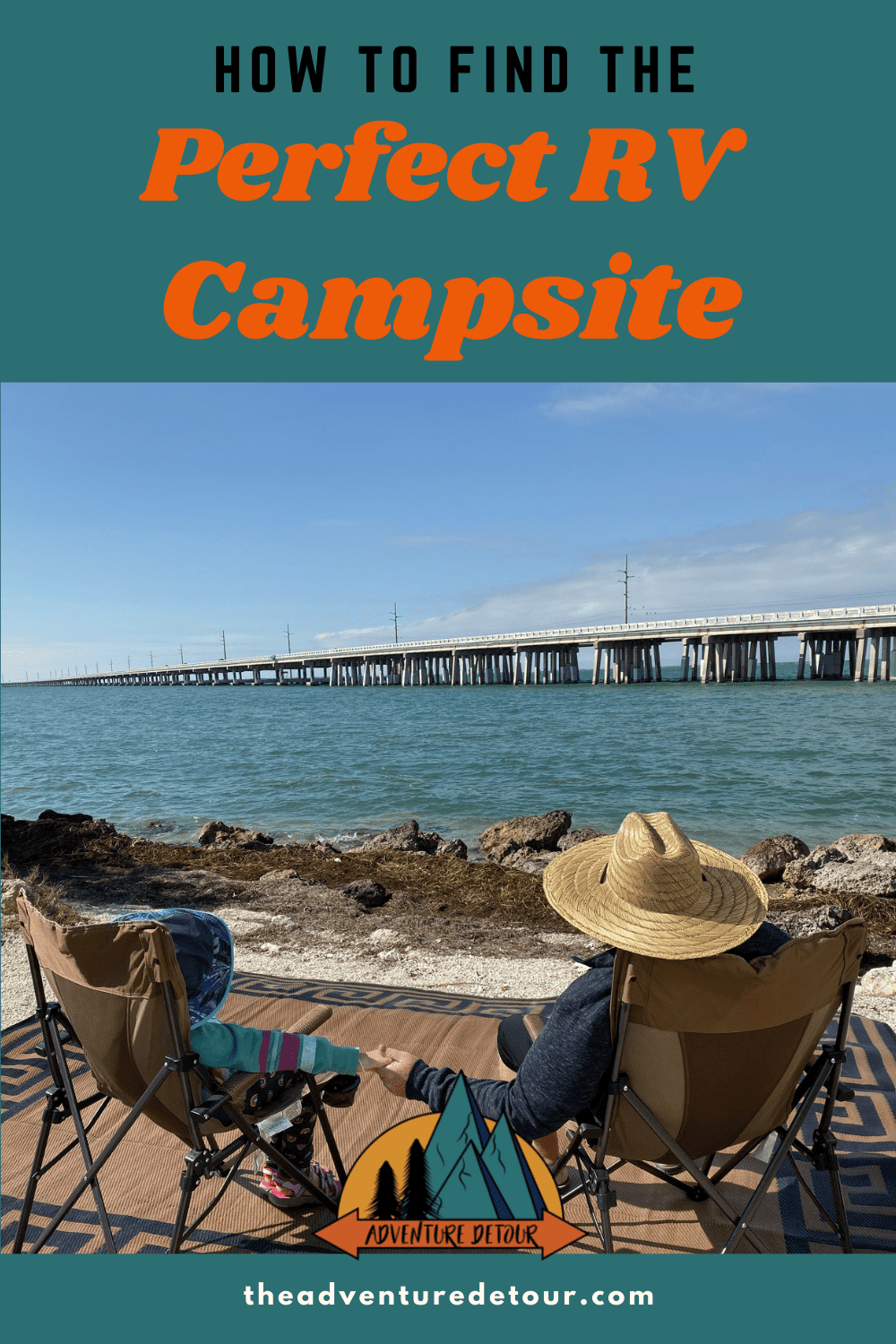
Scott and Van of The Adventure Detour are travel writers focusing on RV travel, family outdoor travel, national parks travel, and hiking. They have been full-time RV living and traveling across the US since 2015. In 8 years of full-time RVing, they have visited 38 national parks so far with the ultimate goal to see them all. They work as digital nomads while roadschooling their daughter nicknamed Sissy. On the way to all 50 states, they have visited and hiked through 42 states so far. The travel bucket list is forever growing!
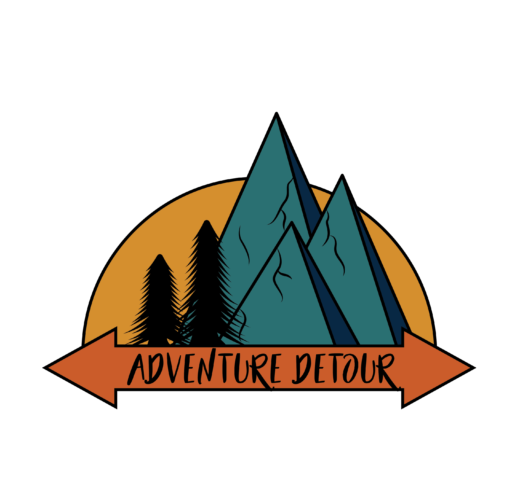
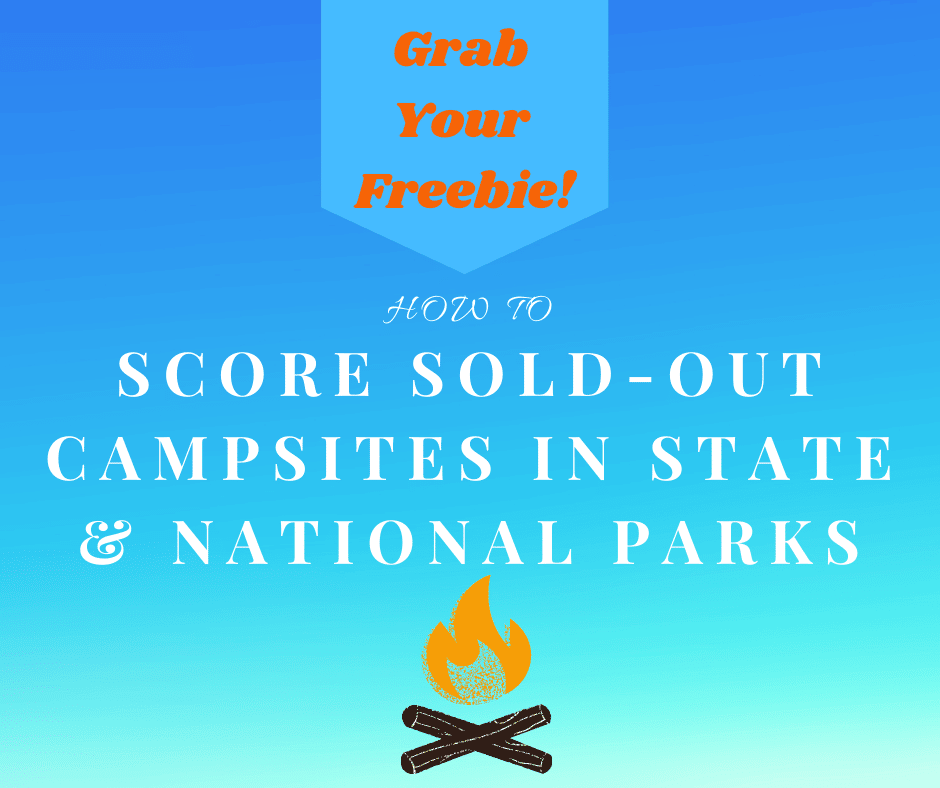
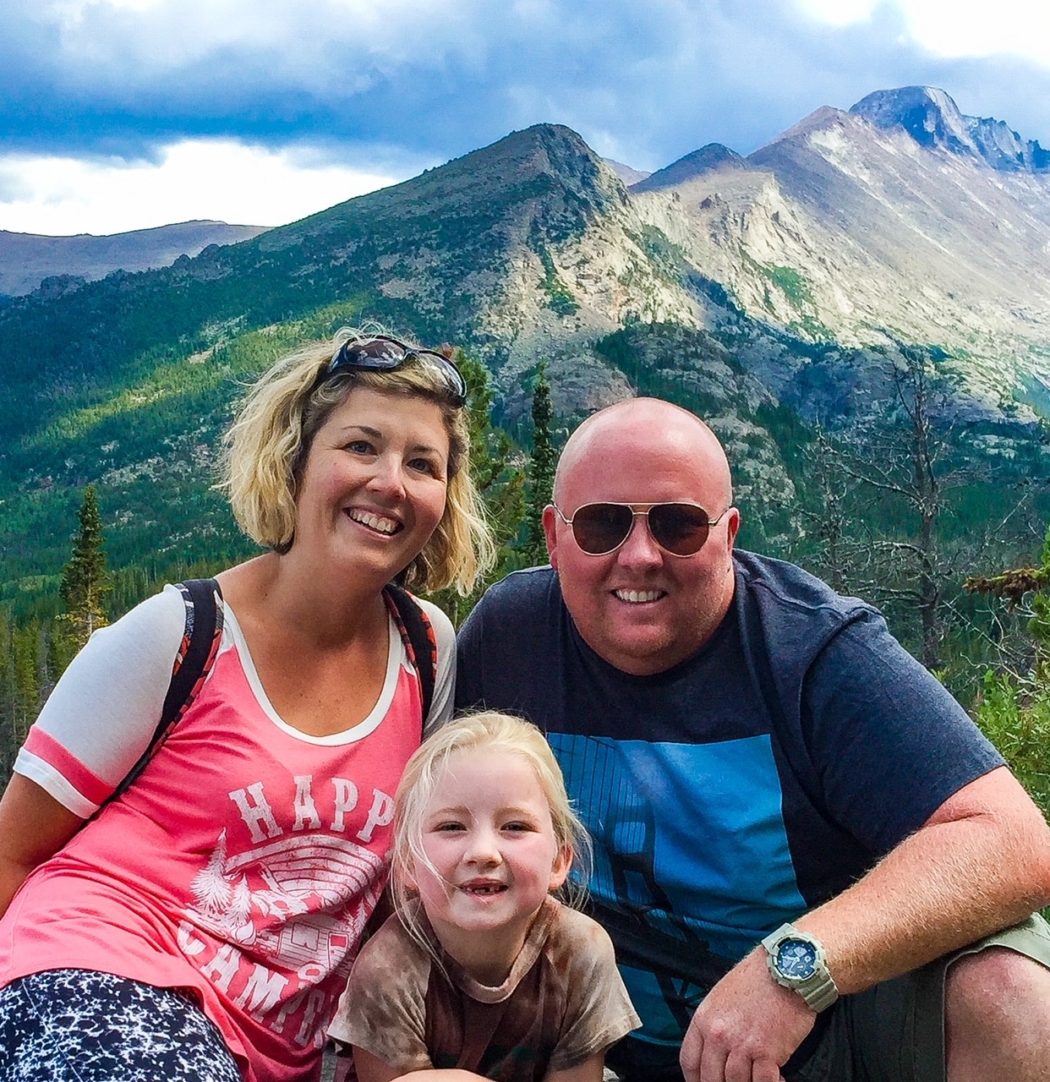
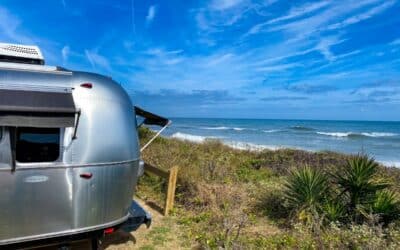
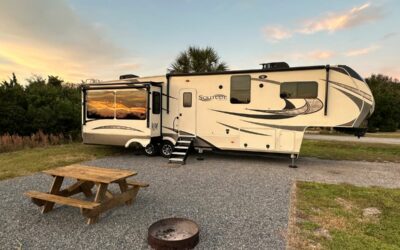
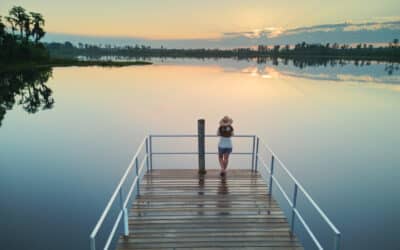

0 Comments